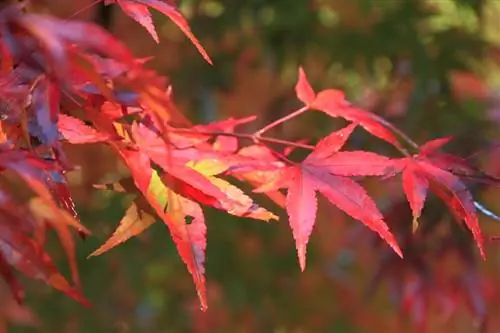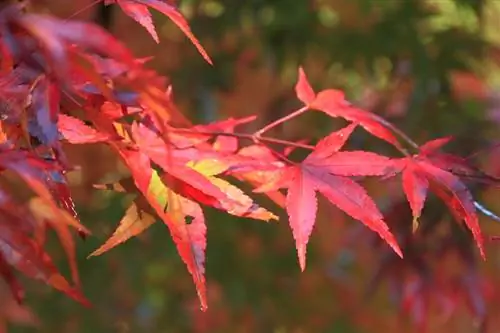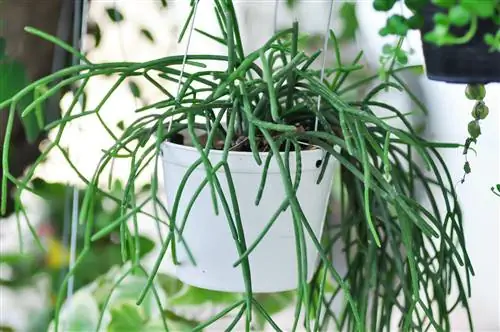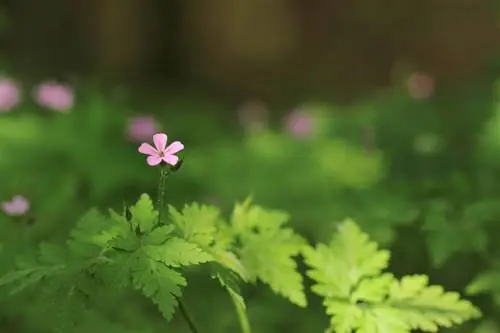- Author admin [email protected].
- Public 2023-12-16 16:46.
- Last modified 2025-01-23 11:20.
Japanese maple (Acer palmatum), Japanese maple (Acer japonicum) and golden maple (Acer shirasawanum) are often cultivated in this country as exotic ornamental trees. However, there are numerous other species, almost all of which are non-poisonous.

Is the Japanese maple poisonous?
The Japanese maple is not poisonous and is even suitable for eating young shoots, seedlings, leaves and flowers. Only red maples are at risk of toxic fungal growth on the bark, although this does not affect the Japanese maple.
In Japan, leaves and shoots are even eaten
Traditionally, maple, regardless of the type and variety, is used worldwide for food: maple syrup is known from North America, but people in Europe also made a sugary syrup from the bleeding sap of native maple species for many centuries. In addition, the young leaves and shoots were either eaten raw, cooked or pickled as vegetables - a procedure that is still common in some regions of Japan today.
Be careful with red maple
Although the Japanese maple, regardless of the type and variety, is not poisonous, it can be covered with a certain poisonous fungus. However, this can only be found on the bark of red maples, but not on red-leaved Japanese maples.
Tip
Young shoots and seedlings can be collected in March / April. The sweet-tasting flowers are also suitable for consumption.






